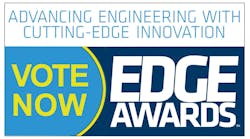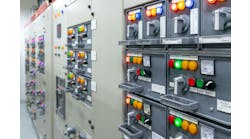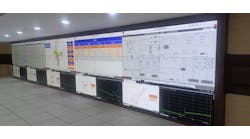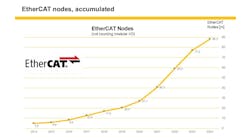“Yokogawa is patient in partnering with clients, and is willing to meet owners where they are." Independent consultant Kenny McNabb, recently retired from Eastman Chemical, praised Yokogawa for its flexibility in meeting the company’s modernization priorities.
A little help from your friends is an old idea these days. However, when you're facing unrelenting equipment obsolescence and looming risk to operations, that crucial assistance can be the difference between continued, successful production and crippling, unplanned downtime.
This is the simple but powerful experience Eastman Chemical is undergoing as it migrates its 20- to 25-year-old process control and automation systems to more modern and digitalized solutions. While a project like this can often feel unapproachable and overwhelming, the firm reports it's relying on its longtime partnership with Yokogawa to make its distributed control system (DCS) upgrade doable and successful. Eastman Chemical is two to three years into its big migration project.
"Migrating process controls can be very jarring, even for a large company, but the way Yokogawa does business is very conducive to the changes that have to occur," said Kenny McNabb, president of McNabb Ventures LLC, who recently retired from Eastman Chemical. "Yokogawa is patient in partnering with clients, and is willing to meet owners where they are, instead of trying to move them to where another supplier might think they should go. This has been a big help and will continue going forward."
McNabb and Don Salyer, technical associate in Eastman Chemical's corporate automation council, presented "How to Justify and Manage a Large Automation Migration Program" at this week’s Yokogawa Users Conference in Orlando.
"In developing the strategy and business case for dealing with our obsolete systems and equipment, Yokogawa helped us get visible in the right way, and bring business language to the automation space," added Salyer. "We surveyed the automation landscape and put it in a business context, so we could prioritize what was needed when we went in front of our executives."
Controls in context
McNabb stressed that the first step in a successful migration project like Eastman Kodak's is to think of the industrial control system (ICS) more broadly.
"The ICS reaches 10% of the chemical and petrochemical asset in our industries, and 30-35% of technical support staff supports automation, though they're often fragmented and widespread," said McNabb. "In a new plant, a majority of the engineering and project deliverables are related to automation, and Industrie 4.0 and plant digitalization efforts are enabled by ICS assets and infrastructure. Also, in total cost of ownership (TCO), the acquisition cost of ICS hardware can be dwarfed by annual support costs, license fees, and support contracts, and exceed the purchase price of an automation system in five to 10 years."
These funding difficulties are compounded by the fact that process control engineers and executives typically speak very different professional languages. Engineers are all about production and uptime, while executives are focused on reducing costs, and these differences don't help when capital expenditures become critically necessary.
"Engineers report when capital expenditures are needed, but executives usually ask if capital improvements can be put off for another year or two, and the engineers try to do it," explained McNabb. "However, the years add up quickly, obsolescence gets worse, and the individual voices asking for improvements become more frequent and louder."
McNabb added that executives also speak corporate strategy, but they too have projects that are vetted, normalized and presented in the terms they're familiar with, which makes it easier for those projects to get approved. "Process control and automation project requests don't have this advantage, and many executives don't know what they do," said McNabb. "As a result, engineers must learn to quantify, prioritize and articulate the business risks their equipment, systems and applications face, and present options and solutions to their management—not just problems. Fragmented requests on similar subjects from various sites are heard up the line as noise."
Upgrades: Not cheap, but needed
McNabb reported the great amplifier of engineering and construction costs related to ICS modernization is that DCS hardware makes up about 6% of the total. "ICS modernization projects are expensive, but actual ICS costs are typically a smaller portion of the overall, while facilities, networks, wiring and instrumentation scope heavily impact the total expense," he explained.
Salyer added that the reality of Eastman Chemical's situation is representative of many production facilities across the process industries. "There was a great deal of automation activity in the early 1980s-90s, but capital reinvestment on ICSs is very low—less than 20% of depreciation—and many installed automation assets have aged out and are obsolete and vulnerable," said Salyer. "A significant portion of the asset base is more than 25 years old, and another large portion is not far behind at 20 years old.
"We have talented people, who can come out late at night and keep control systems running. However, we need to go from incremental upkeep to full DCS modernization. While some components are easy to upgrade, others like I/O can be very hard to swap out, but they must because eventually there's just too much risk due to obsolescence."
Going with judicious
Just as he doesn't recommend waiting too long to upgrade, Salyer doesn't advise being an early adopter either. Instead, he and McNabb suggest using "judicious awareness" on a seven- to 15-year schedule that includes:
- Replace/upgrade assets to enable compliance with internal/external commitments (physical and cybersecurity) business needs;
- Managed obsolescence that's supported and patchable;
- Be willing to skip a technology generation if existing components are compliant; and,
- Perform upgrades as needed based on benefit and risk.
McNabb and Salyer reported that a useful ICS migration begins with a thorough inventory of its existing components, software and networks, as well as a risk assessment (RA) of all those pieces to help decide what to replace or repair first. "You also need to come up with context for all sites that might affect upgrade decisions, such as how they fit into the company's corporate strategy, what kinds of earnings they have and are there regulatory requirements," explained Salyer. "Next, you organize them in tiers and prioritize them in a three-by-three matrix. Instead of the ‘popcorn' of various different requests coming up, this procedure will let the executives avoid erratic spending and properly manage their cash flow. It's never easy to modernize a DCS, but this will help it get done."






